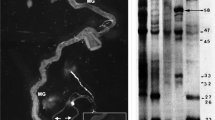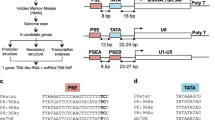Abstract
We describe the isolation of a new type of RecQ homologue in Drosophila melanogaster, RECQE. The Recqe gene consists of five exons and four introns, and encodes a protein of 1058 amino acids with a predicted molecular weight of 120,000 Da. The RECQE protein has seven helicase motifs. The helicase domain shows 42% identity overall to that of Escherichia coli RecQ DNA helicase, and is most closely related to Homo sapiens RecQL5 and Caenorhabditis elegans E03A3.2. The C-terminal region of RECQE protein is unique and the longest known among members of the RecQ superfamily. We demonstrate that the RECQE protein has DNA helicase activity and that the C-terminal region is dispensable for this activity. The RECQE mRNA accumulates in oocytes and is expressed at high levels in early embryos. We show for the first time that the expression of a RecQ homologue is developmentally regulated in embryos. These data suggest that the DNA helicase activity of RECQE might be involved in the DNA metabolism of early embryos.
Similar content being viewed by others
Author information
Authors and Affiliations
Additional information
Received: 10 September 1999 / Accepted: 30 November 1999
Rights and permissions
About this article
Cite this article
Jeong, S., Kawasaki, K., Juni, N. et al. Identification of Drosophila melanogaster RECQE as a member of a new family of RecQ homologues that is preferentially expressed in early embryos. Mol Gen Genet 263, 183–193 (2000). https://doi.org/10.1007/s004380051159
Issue Date:
DOI: https://doi.org/10.1007/s004380051159




